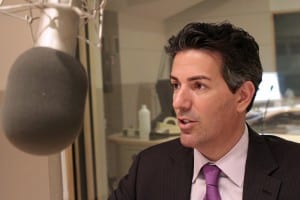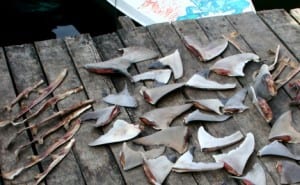CONTROVERSY—Former Vegans Explain Why They Eat Meat: Are You Convinced?
I became a vegetarian when I was a teenager. I didn’t have the most well-formulated reasons, but I had convictions. I had learned about the slaughtering of baby harp seals for their fur and felt appalled at such inhumane treatment of animals; I was troubled to learn about how unhealthy fast food is. The thought of eating dead animals — certainly the pork that is frequently found in the Cantonese cooking my grandmother made – simply came to bother me.
To this day, I don’t miss meat. I’ve never minded foregoing the Christmas roast or the Thanksgiving turkey. In a recent article in The Atlantic two former vegetarians and vegans explain why they have again chosen to eat meat; a vegetarian of many years explains why she supports others’ choice to eat meat. The last-mentioned individual, Nicolette Hahn Niman is a livestock rancher, environmental lawyer and author of Righteous Porkchop: Finding a Life and Good Food Beyond Factory Farms; her husband, Bill Niman, is founder of Niman Ranch, a “natural meat company.” Tovar Cerulli is a deer hunter and author of The Mindful Carnivore: A Vegetarian’s Hunt for Sustenance. Joshua Applestone is a butcher, an instructor, and co-author of The Butcher’s Guide to Well-Raised Meat.
[pullquote]What do you think?[/pullquote]
Arguments For Eating Meat
All three describe becoming vegetarian around the age of 20 or so, for ethical, religious, moral reasons, after learning about how beef-raising practices were deforesting the Amazon, about the Buddhist teachings of Thich Nhat Hanh, about the less than pretty practices used in rearing and slaughtering cattle in the beef industry. What changed two of their minds?
Niman, while remaining a vegetarian, notes that, in her work as an environmental lawyer, her study of ecologically-based farming showed her how essential animals are to sustainable farms as they “increase soil fertility, contribute to pest and weed control, and convert vegetation that’s inedible to humans, and growing on marginal, uncultivated land, into food.” Cerulli recounts how living in a rural community showed him that raising all sorts of food comes at a cost:
From habitat destruction to combines that inadvertently mince rabbits to the shooting of deer in farm fields, crop production is far from harmless. Even in our own organic garden, my wife and I were battling ravenous insects and fence-defying woodchucks. I began to see that the question wasn’t what we ate but how that food came to our plates.
According to Cerulli, adding eggs, dairy, chicken and fish back into his diet also led to an improvement in his and his wife’s health.
A vegan for 15 years, Applestone says that he “overcame [his] aversion to consuming meat” after seeing farmers raising animals “sustainably and ethically”; he realized that he really had a “problem with the inhumane practices of the commercial meat industry.” Indeed, it is the practices of industrialized agriculture that come under critique by all Niman, Cerulli and Applestone. “Eating animal-derived foods” is not, in and of itself, a health risk, they say; it is over-consumption that is.
Health, the environment and ethics are often cited as arguments for not eating meat. Niman rather calls for a “new ethics of eating animals.”
Niman writes:
Every living thing, from mammals, birds, and fish to plants, fungi, and bacteria, eats other living things. Humans are part of the food web; but for the artifices of cremation and tightly sealed caskets, all of us would eventually be recycled into other life forms. It is natural for people, like other omnivores, to participate in this web by eating animals. And it is ethically defensible — provided we refrain from causing gratuitous suffering.
Noting that “only about three percent of Americans are vegetarian and 0.5 percent are vegan” and that about three-quarters of those who try vegetarianism or veganism return to eating meat, Niman suggests that, rather than exhorting people only to eat plants, ”doesn’t it make more sense to encourage them to eat an omnivorous diet that is healthy, ethical, and ecologically sound?”‘
Eating Isn’t Always Based on Rational Arguments
I can see how these arguments make sense. We are all part of a food web, an ecosystem, fellow denizens on this planet.
But we don’t make our choices about food and eating entirely based on reason; eating is a topic that is highly emotional. Our reasons for choosing what foods we prefer to eat are very much (whether we know it or not) based on ineffables like habit, preference for taste and texture, memories and associations. We may conclude that our decision not to eat meat is based on ethical, philosophical principles and, just as much, on a squeamish feeling in our stomach in knowing that the lamb chop on our plate was once an actual lamb’s leg. Eating meat may simply neither taste nor feel right. If more than three percent of the population was vegetarian and demand for chicken and pork and such dramatically decreased, could industrial-scale animal raising be made obsolete? Is it possible that so much of the population is eating meat because it is readily available?
What do you think of Niman’s, Cerulli’s and Applestone’s arguments?
For myself, I’m looking forward to a Christmas meal that’s heavy on the vegetables and grains.
Related Care2 Coverage
Mercy For Animals Debuts New Commercials





